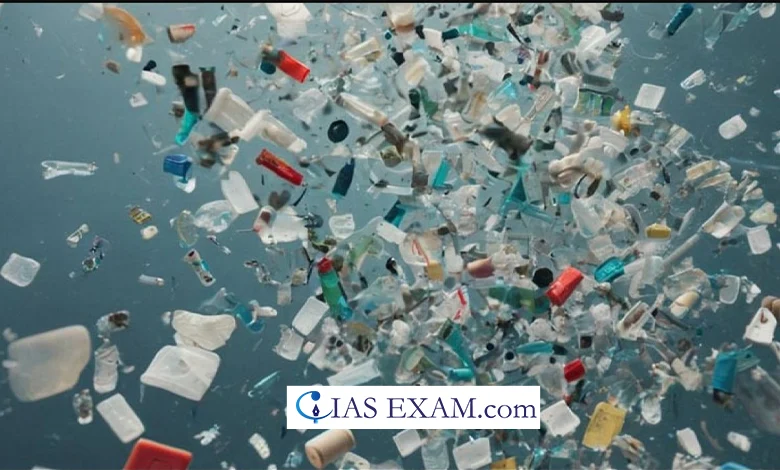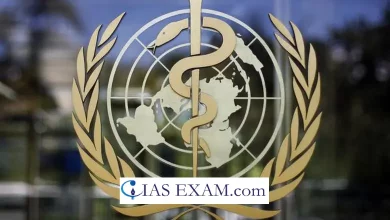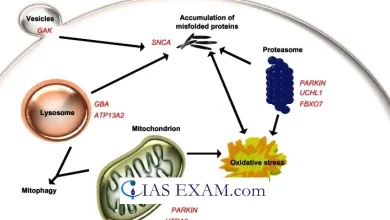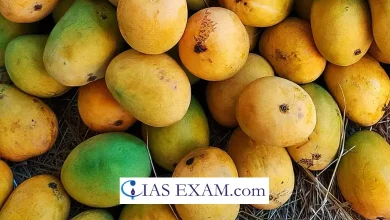IISc creates novel hydrogel to filter microplastics from water
Syllabus: Science and Technology [GS Paper-3]

Context
Researchers at the Indian Institute of Science (IISc) have developed a novel hydrogel that can efficiently remove microplastics from water, addressing a significant environmental concern.
Innovative Hydrogel Design
The scientists at the Indian Institute of Science (IISc) led the world in this field of environmental science by making a new hydrogel that has the proven ability to remove microplastics from water.
This renewable material does not only come up with a novel and sustainable system, but it has also proven that it can degrade pollutants which makes it a remarkable step forward in the war against water pollution.
Here are the key details of the hydrogel and its capabilities
- Composition: The hydrogel is made up of a three-dimensional (3D) polymer network (IPN) with three different polymers forming the layers: chitosan, polyvinyl alcohol (PVA), and polyaniline. This complex, multi-layered network is the mechanism that renders the server more durable,heget.
- Functionality: The hydrogel inter-woven with nanobeads of copper substitute polyoxometalate (Cu-POM) can be regarded as a catalyst that dissolves the microplastics while under UV light irradiation. This process, by the way, is responsible for the removal of these pollutants from water effectively.
- Efficiency: The hydrogels have been tested extensively and found quite efficient in flushing as many as 95% microplastic particles from water in laboratory mise en scene.
- Sustainability: The gel after its main use can also be reused for the synthesis of carbon nanomaterials that pharmaceutical companies can use to treat water with high concentrations of metals. This duality of use suggests sustainability in design of the futuristic product.
- Durability: The hydrogel has been said to last up to 5 cycles of microplastics removal, and it has been observed that the hydrogel succeeds in the removal of microplastics without noticeable loss of efficacy within the said number of cycles.
- Research Team: The project was led by Prof. Bose, SERB National Post-doctoral fellow from the Department of Materials Engineering under IISc Bangalore (India). The study was carried out by Dr.Dutta, the first author of the paper.
Challenges
The development of the novel hydrogel by IISc researchers to remove microplastics from water faced several challenges:
- An IISc team invented hydrogel for treating microplastics from oil spills and removing obvious consequences of the use of membrane filters.
- The hydrogel was designed to extract and deplete microplastics of different sizes and maintain the stability in any possible environmental situations.
- The research team was engaged in the experimental field to test the completion of hydrogel into pH values, temperatures, and microfibers concentrations.
- The development of a sustainable material was the high prize goal that the team pursued in order to upcycle this material for a purpose of heavy metal removal from water.
- The material durability of the hydrogel was also examined through five cycles with the result that the hydrogels meet the application purposes.
- The work of the team is currently helping in the designing of an eco-friendly and effective plan for microplastic pollution.
Environmental Impact
- The environmental impact of the new IISc hydrogel is showing to be large and covers a wide range of categories.
- The environmentally-sustainable hydrogel selectively tackles one of the most significant issues related to the microplastic pollution of water, which poses a huge threat to human wellbeing as well as eco-systems.
- This hydrogel provides disease protection against microplastics that find their way in water reservoirs and pose a risk for aquatic and terrestrial organisms through filtering out microplastics.
- Furthermore, the hydrogel is environmentally friendly too and has a double role where it can clean the water from heavy metals, it is a perfect solution for the pollution control and environmental protection.
Conclusion
The novel hydrogel developed by IISc researchers is a promising tool in the fight against microplastic pollution. Its unique composition, efficiency, and sustainable design make it a valuable addition to the arsenal of technologies aimed at protecting our water resources and, by extension, our health and the environment. The success of this hydrogel could pave the way for more innovative solutions to emerge, reinforcing the role of scientific research in addressing the pressing environmental challenges of our time.
Source: The Hindu
UPSC Mains Practice Question
Q. Discuss the significance and potential impact of the novel hydrogel developed by IISc for filtering microplastics from water. Highlight the challenges associated with microplastic pollution and how innovative solutions like this hydrogel can contribute to addressing this global environmental issue.





.png)



